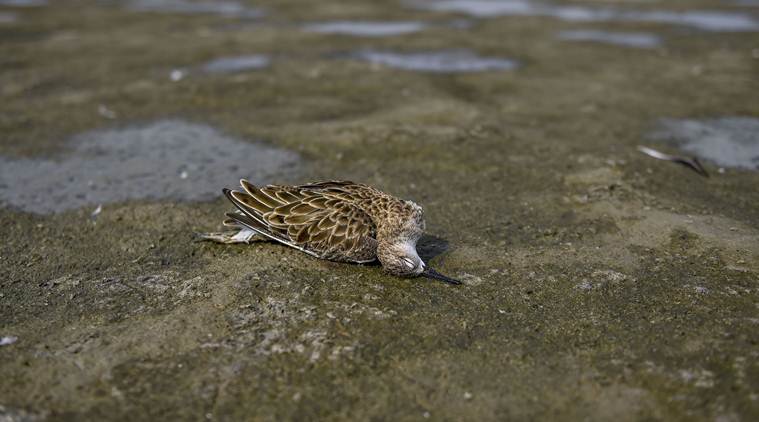- India
- International
Over 10,000 birds dead in Rajasthan
As per the Forest Department, a total of 10,760 birds have been buried since November 11, a day after dead avians were spotted by visitors at India’s largest inland salt water lake, nearly 80 km southwest of Jaipur.
 Sambhar Lake: A dead bird at the Sambhar Salt Lake in Rajasthan, Monday, Nov. 11, 2019. Thousands of birds of various species were found dead at the lake Sunday even as authorities tried to ascertain the cause of the large scale deaths. (PTI Photo/Ravi Choudhary)
Sambhar Lake: A dead bird at the Sambhar Salt Lake in Rajasthan, Monday, Nov. 11, 2019. Thousands of birds of various species were found dead at the lake Sunday even as authorities tried to ascertain the cause of the large scale deaths. (PTI Photo/Ravi Choudhary)
The number of dead birds buried by various agencies at Rajasthan’s Sambhar Lake crossed the 10,000 mark on Saturday, officials said.
As per the Forest Department, a total of 10,760 birds have been buried since November 11, a day after dead avians were spotted by visitors at India’s largest inland salt water lake, nearly 80 km southwest of Jaipur.
Of these, 8,021 birds have been buried in Jaipur while 2,739 have been buried in Nagaur. On Saturday, 1,303 birds were buried in Nagaur while 1,393 were buried in Jaipur. Officials said that combing operations in Jaipur will continue on Sunday, while nearly a 12-km stretch remains in Nagaur.
As many as 360 birds have also been rescued since November 11, of which only 264 are alive. On Saturday, 117 birds were rescued from Jaipur and 30 from Nagaur.
Meanwhile, the report by Apex Centre for Animal Disease Investigation, Monitoring and Surveillance, under the Bikaner-based Rajasthan University of Veterinary and Animal Sciences (RAJUVAS), has officially suggested avian botulism — a paralytic and often fatal disease caused by ingestion of toxins — as a possible cause.

“On the basis of history, epidemiological observations, classical clinical symptoms and post-mortem findings, the most probable diagnosis is avian botulism,” the Centre said in a report after studying samples. “The clinical signs exhibited by affected birds included dullness, depression, anorexia, flaccid paralysis in legs and wings, and neck touching the ground. The birds were unable to walk, swim, or take flight. There was no rise of body temperature, no nasal discharge, no respiratory distress or any other sign,” the report said.
Apr 25: Latest News
- 01
- 02
- 03
- 04
- 05































